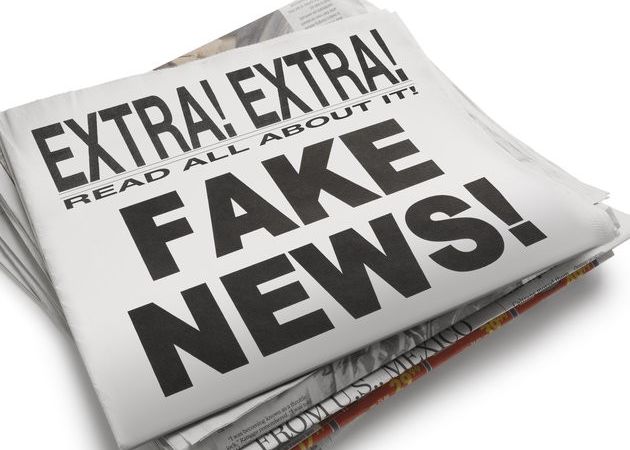In the latest “Practice Innovations”, we discusses the phenomenon of fake news and how detecting it has impacted law firm librarians
This article was written by Genevieve Zook, an instructional services librarian at the law library of the University of Wisconsin
There is an old saying, sometimes mis-attributed to Winston Churchill and sometimes to Mark Twain,[1] that “a lie can travel halfway around the world before the truth has put its boots on.” Even though this quote dates back to before 1919 — long before technology made it possible to spread fake news across social media platforms — the public must have understood how swiftly a lie can travel.
In our online environment, this saying is more on point than ever before. Due to technology advances, 24/7 news cycles with around the clock social media activity, fake news or “alternative facts” has increased dramatically. According to a recent study from MIT, fake news moves faster than actual news, and is surprisingly spread mostly by humans, not by bots.[2]
The definition of fake news has transformed as well. Traditionally it referred to news intentionally designed to mislead or give false information. Alternatively, it could be defined as propaganda, biased or one-sided point of view articles, false advertising, and satire. Due to misuse of this term, fake news can also be considered as any information that does not adhere to one’s confirmation bias. Confirmation bias is typically described as tending to process information that is consistent with one’s own beliefs, and fake news stories play upon these confirmation biases.
You can find references to fake news everywhere today. The phrase has begun to appear in annual reports to the Securities & Exchange Commission. There are numerous studies, newspaper articles, blog posts, and scholarly works on the subject as well, and several practical articles that discuss legal remedies.[3] The main theme of these resources is concern regarding the harmful impact of fake news. This may be a good thing though. If the public is concerned about the problems caused by fake news, those who have the power to implement change will be more willing to listen and do something to stop its spread. Despite our weaknesses and bias when it comes to fact-checking information, strategies and tools will be developed that can help people stop the spread of fake news. In the meantime, below are some strategies and tools that already have been developed.
First, you can follow criteria designed for academic research called the CRAAP test. The CRAAP test was originally an acronym for Currency, Relevance, Authority, Accuracy, and Purpose, (CRAAP) developed for first-year instructors by a librarian in 2004.
You apply the test by searching for clues to the authenticity of a news item by asking yourself a series of questions:
-
-
- Who wrote the article? What is the byline? Does it have an author, and if it is a scholarly article, is the author an expert in that field of study?
- Check the date. When was the article written? Is it dated anywhere in the article? Fake news is often undated or lacks currency.
- Is the URL from a trustworthy source or does the URL only mimic a trusted site? For a compiled list of untrustworthy sites, check the listing from Dr. Melissa Zimdars in Tips for analyzing news sites.
- Is the site clickbait? Do ads pop up the moment you click on the link?
- Boom! Does the news elicit an emotional reaction, like anger? Is the language inflammatory or one-sided?
- Look for confirming bias. Fake news spreads quickly because we seek out information that reinforces what we believe.
- Is the article written well or is it filled with grammatical errors and typos? Is it written in all caps? Fake news creators may be clever, but they aren’t known for their smooth writing skills or style.
- What, if anything, does the article link to? Does it cite reliable sources of information? Is the data verifiable? Who are the experts cited?
- If the article includes images or videos, can you trace them to another source? Fake news will often include mislabeled or altered photos or videos.
-
For more on spotting fake news, please check the guides that librarians across the country have created. This list is originally from an article published and updated in AALL Spectrum, July/August 2017,[4] and reprinted in Law and Technology Resources for Legal Professionals (LLRX). These guides are a great place to find tools, browser extensions, fact-checking sites, articles, books, and other material devoted to anyone who is interested in learning how to spot fake news.
Library Guides for Detecting Fake News
-
-
- American Library Association bit.ly/JA17ALA
- Embry-Riddle Aeronautical University https://bit.ly/2qWYcvq
- Harvard Library bit.ly/JA17Harvard
- Hillsborough Community College Libraries bit.ly/JA17Hills
- Indiana University East bit.ly/JA17IU
- Pace University Library bit.ly/JA17Pace
- Penn State University Libraries bit.ly/JA17Pace http://bit.ly/JA17Pace
- Toronto Public Library bit.ly/JA17Toronto
- University of Michigan Library bit.ly/JA17Mich
- University of Oregon bit.ly/JA17Oregon
- University of Virginia Library bit.ly/JA17UV
- University of Wisconsin College Library
- Valencia College bit.ly/JA17Valencia
-
More Guides & Tools for Spotting Fake News
-
- Snopes.com has a useful article on how to spot fake news: Snopes’ Field Guide to Fake News Sites and Hoax Purveyors.
- OSOME is a project out of Indiana University that studies the diffusion of information. This site provides tools such as Hoaxy, Botometer, and Fakey, a tutorial that teaches how to spot fake news.[5]
Fake Photo Detector & Browser Extension
-
- Surfsafe.com. For more on this browser, see http://www.dailycal.org/2018/09/05/uc-berkeley-students-launch-browser-extension-to-combat-fake-photos.[6]
- For examples of fake news images, see the Washington Post article regarding Jim Acosta’s doctored video and a photograph of a WWI battalion located on Twitter.
The Future of Fake News Detection
The Internet is made up of:
-
-
- the surface net or what we see when we use a search engine;
- the Deep Web, what we see when we use a subscription service such as Lexis or Westlaw, or a private account; and
- the Darknet, where the criminal element of the Internet lurks.
-
According to a forthcoming article, the next level of fake news will be Deepfakes, a technology that uses artificial intelligence (AI) to create fake videos and speech. In an example from their article, they discuss Reddit’s announcement of a policy change banning what Reddit called involuntary pornography, defined as imposing an individual’s face without permission into a pornographic film.[7] The fakes used the faces of celebrities, but they will not be the only victims of this type of abuse. Anyone who has an image on the Web could be a potential victim of a deepfake and it might be very difficult to prove harm. Still, if AI is used to create fake news, AI systems will also be developed to spot fake news, according to an article on AI solutions to fake news.[8]
Unfortunately, there doesn’t appear to be an urgency coming from technology companies to solve the fake news problem or stem the flow of fake news. According to news reports, what Facebook has accomplished so far appears to be a superficial stab at self-regulation to appease or even scare off critics.[9] Google has announced that it will create an AI browser, but that has yet to materialize; and no matter the innovation in technology, critical thinking skills are still required to ensure the accuracy of information, a job no machine can do.
One hopeful sign regarding spotting fake news is the fact that although people may spread fake news, they also tag the fakes and share this information with others.[10] Photographers who work with video discovered Jim Acosta’s doctored video quickly and the images were shared with mainstream media outlets. It is reassuring that perhaps, just perhaps, you can’t fool all of the people all the time, even when the technology is designed to fake the truth.







